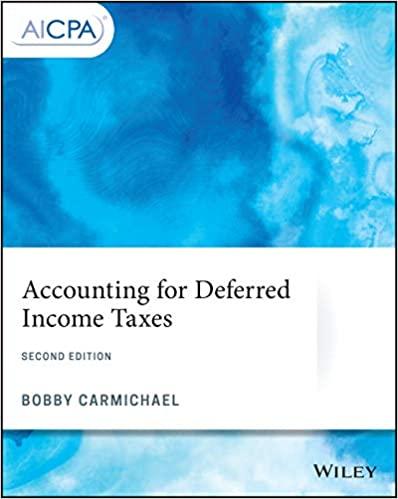Question
Need help with A,B and C. This is one whole problem so kindly skip if you are unable to answer A,B and C. Thank you
Need help with A,B and C. This is one whole problem so kindly skip if you are unable to answer A,B and C. Thank you :)
Rensing Groomers is in the dog-grooming business. Its operating costs are described by the following equations:
Grooming supplies (variable) . y = $0 + $5x
Direct labor (variable) .. y = $0 + $14x
Overhead (mixed) y = $10,000 + $1x
(Note that data above summary is: $20 in total VAR (5x + 14x + 1x) and $10k in FXD costs
Milo, the owner, has determined that direct labor is the cost driver for all three categories of costs.
Instructors Note: Above Y = translated for us math-challenged. Grooming supplies and Direct Labor means there is -0- fixed $$ but the variable cost is $5 times the activity. OH has Fxd and Var components. $10,000 fixed plus a variable part of ($1 times the activity level).
Instructions
(a) Prepare a flexible budget for activity levels of 550, 600, and 700 direct labor hours.
(b) Calculate total cost per direct labor hour for each of the activity levels, 550, 600 and 700.
(c) The groomers at Rensing normally work a total of 650 direct labor hours during each month. Each grooming job normally takes a groomer 1.3 hours. Milo wants to earn a profit equal to 40% of the costs incurred. Determine what he should charge each pet owner for grooming.
(a)
| Activity Level Direct Labor Hours | 550 | 600 | 700 |
| Variable Costs: | |||
| Grooming Supplies | |||
| Direct Labor | |||
| Overhead | |||
| Total Variable Costs | |||
| Fixed Costs: | |||
| Overhead | |||
| Total Costs | |||
(b)
| Var $ Cost (above) | Divided by Activity Levels | = | Cost per Direct Labor Hour |
| 550 | = | ||
| 600 | = | ||
| 700 | = |
(c) (FYI: this calculation uses no answers from either (a) or (b)
Here is one way to get the answer to (c):
1st Calculate the total cost which is the Fxd $ + Var $ meaning ($10,000 + ($20 x DLH)
2nd ... Calculate the number of clients: 650 DLH / 1.3 DLH ea grooming job = # clients.
3rd Total cost (1st answer) divided by # clients (2nd answer) = cost per client.
4th Cost per client plus 40% markup means (3rd answer x 1.40) = Charge per client.
| Charge per client |
Step by Step Solution
There are 3 Steps involved in it
Step: 1

Get Instant Access to Expert-Tailored Solutions
See step-by-step solutions with expert insights and AI powered tools for academic success
Step: 2

Step: 3

Ace Your Homework with AI
Get the answers you need in no time with our AI-driven, step-by-step assistance
Get Started


